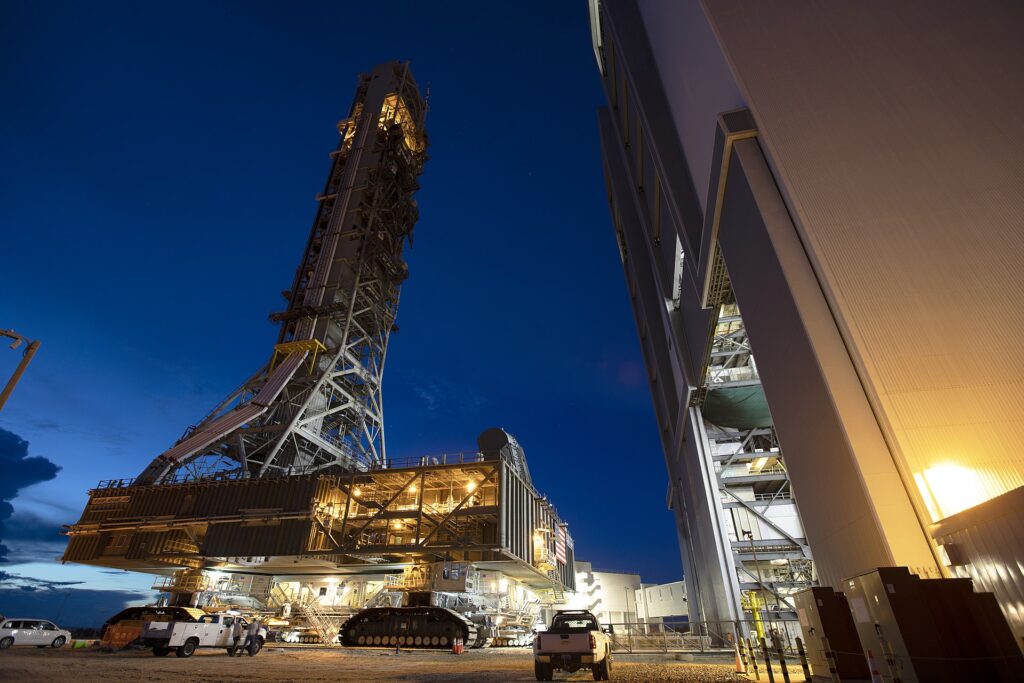Delays in repairing ground systems, such as the mobile launch platform, could lead to the postponement of the Artemis II mission. This is according to a report recently published by the U.S. General Accounting Office (GAO).

NASA has been working to modernize and repair ground systems since the launch of the Artemis I mission in November 2022. During its launch, the mobile launch platform suffered more damage than expected. Therefore, the decision was made to add protective barriers to mitigate damage during future launches. NASA also installed an emergency evacuation system for astronauts on the launch pad, and updated software and environmental systems.
But although the launch site preparation is nearing completion, the EGS (Exploration Ground Systems) program, under which the repair work is being carried out, has no reserve time in case of any problems or unforeseen difficulties. Although NASA moved the launch date for Artemis II from November 2024 to September 2025, this gave the program only a three-month window of time. According to GAO, it was already used up by June 2024 due to problems during testing of the mobile launch platform. As a result, the authors of the report concluded that if further work encountered additional difficulties, it would almost certainly result in a postponement of the Artemis II launch date.
It is worth noting that as of today, many experts are highly skeptical that NASA will actually manage to launch Artemis II in September 2025. However, aerospace administration leaders continue to remain optimistic. In this way, NASA Administrator Bill Nelson confirmed the September 2025 launch date for Artemis II during a recent speech at the International Astronautical Congress in Milan.
Any delays to the launch of Artemis II will inevitably affect the launch date of Artemis III — especially if the mobile launch platform suffers new damage. Another factor that could affect the launch schedule is the situation with the Orion heat shield, which sustained more than expected damage during the Artemis I mission. NASA hasn’t announced its decision on whether it needs to make changes to its design yet.
The GAO report also examines the situation with the second ML-2 mobile launch platform being built for the SLS Block 1B rocket. It will be used in the Artemis IV mission, scheduled for launch in September 2028. NASA’s inspector general released a report in August that said contractor Bechtel had already greatly exceeded its deadlines and costs — and they could increase even further.
Therefore, GAO recommended NASA to conduct a formal risk analysis of the ML-2 readiness schedule. The Aerospace Administration’s response only partially accepted the recommendation, stating that it had no plans to conduct this specific analysis. NASA said it would use “multiple risk and schedule analysis instruments” to track progress on the ML-2 instead.
Recall that GAO previously estimated that there was only a 70% chance that the Starship HLS spacecraft would be ready to land on the Moon by early 2028.
According to Spacenews


